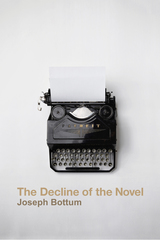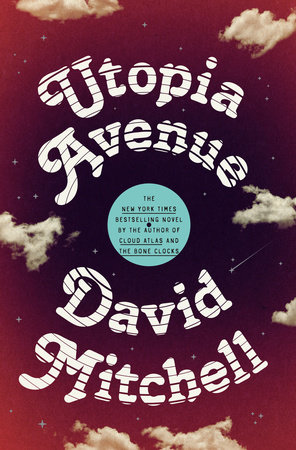
Dom Alcuin Reid introduces this book’s English-language edition, averring how Bugnini in Chiron's 2016 study "emerges as a remarkable organizer rather than as a theologian or liturgy expert" (11). Refusing hearsay, Chiron provides a sober account of Bugnini’s life’s work, limited to interpreting the documents at hand. This caution makes this biography trustworthy. It also results in a sober, cut-and-dried recital of facts.
From his novitiate in 1920 at the age of eighteen, Bugnini committed himself to the Liturgical Movement spearheaded by French and German Benedictines, Dominicans, and Jesuits. These pioneers had already invented, for at least a generation, experimental “paraliturgies” (25) aimed at increasing lay involvement and decreasing barriers to full entry by the congregation into the celebration of the Mass through a shift in prayers and songs to what they labeled a living language, the vernacular. Bugnini after his ordination composed a brochure touting such a service, where a lay lector would interpret and comment in Italian upon the Latin.
Starting in Rome in 1943, his bilingual Mass engaged the people with dialogue, as they chanted the responses, prayed aloud, and accompanied the priest's actions with their own gestures. Bugnini's self-published booklet of this version as "Our Mass," by its twelfth and final edition in 1962, had sold a million and a half copies.
Fittingly, by that year, Bugnini had embedded himself deep within the preparations for the ecumenical council announced by John XXIII. Bugnini’s eponymous “method” (82) to advance his liturgical reforms worked this way. First, he assigned specialists to meet separately to convene on restricted subjects. These specialists rarely had a chance to meet with their colleagues for a plenary vote on proposals. Second, he inserted vaguely worded passages into conciliar documents, to avoid censure or scrutiny.
After the Council could then be applied, free from papal censure, the reformers capitalized on their ambiguous phrasing and implied suggestions. This strategy worked; by the time Paul VI figured out how his trusted cleric within the Congregation of the Rite had tipped the scales in favor of the progressives, the Pope could not turn back the experiments which became the new normal in the 1969-–1970 vernacular Mass. Chiron acknowledges his subject's "perfect mix of know-how and communication skills" (109) which broadcast bold models. Concelebrated Masses, altars facing the congregants, and lay-led functions took precedence, followed by Communion in the hand and elimination of all Latin.
Chiron asserts that these features had been incrementally introduced through the 1960s, and that thus they are not as novel as detractors claim. This statement diminishes the ambitions of the reformers to sidestep the Council's insistence that Latin be preserved for the Canon as the foundation of the Mass. All the same, his judgment that by the end of the decade, the new Mass synthesized the updates already inserted by various bishops in certain dioceses or countries remains incontrovertible. A communal meal more than a sacrificial ceremony became the global standard, with every approved Mass entirely in the local language.
After shepherding further reforms in the breviary and other liturgies, Bugnini in his words had "been resigned" (137) suddenly in 1975. Pope Paul may, Bugnini alleges, have been influenced by "court intrigues" and rumors that he was a Freemason. This calumny persists. Translator John Pepino appends further documentation considering its effect on Bugnini a few years later as he denied the charge made in a letter to an American review of homiletics. Chiron sides with Bugnini given at least a reasonable doubt remains of his innocence.Yet Chiron admits he finds the evidence "inconclusive" (168). Until Bugnini's colleagues open his correspondence to public research, the case cannot be satisfactorily judged. Chiron gives Bugnini the benefit of his doubt.
Having no knowledge of Spanish, Bugnini refused the papal command to serve as nuncio in Uruguay. A year later, Bugnini found himself in Iran instead. He empathized with the burgeoning revolution against the beleaguered Shah; again, given the lack of documentation, the context of brief remarks Bugnini had written awaits the release of his letters. He continued writing books on the liturgy as well as his autobiography, which remains untranslated from Italian. He returned to Rome before his death in 1982. With that, Chiron's account stops too quickly, granting only a few paragraphs to his lasting impact after his daring implementation of reforms that have altered the Mass and liturgies ever since.
This brief book provides readers with a compendium of the documents and decisions undertaken over decades of liturgical innovation and experimentation. The audience may remain specialized, scholars of Church history and Catholic liturgy. Chiron eschews commentary or analysis of his subject. All the same, for English-language audiences, this gathers what is known at present from available sources.
Chiron leaves open the question of what impelled Bugnini to dismantle so much from so many centuries of Catholic heritage and accumulated stability. The book delivers the information, which may guide scholars into his proof-texts and the writings of those who worked with, or against, Bugnini.
For the time being, resigned to the embargo placed on full access to Bugnini's personal papers, Yves Chiron compiles what can be said to be known about this controversial prelate's mission to replace a venerable rite with a modern liturgy.






 I heard of but never heard Bitch Magnet, the indie band that made Fine a bit famous, but reading his narrative of a quarter-century trying to make a living out of or alongside the van-driving, $10 a day meal allowing, and sweaty ambiance of the clubs and dives where bands played, you come out feeling as if you've finished a long journey by his side.
I heard of but never heard Bitch Magnet, the indie band that made Fine a bit famous, but reading his narrative of a quarter-century trying to make a living out of or alongside the van-driving, $10 a day meal allowing, and sweaty ambiance of the clubs and dives where bands played, you come out feeling as if you've finished a long journey by his side.


















